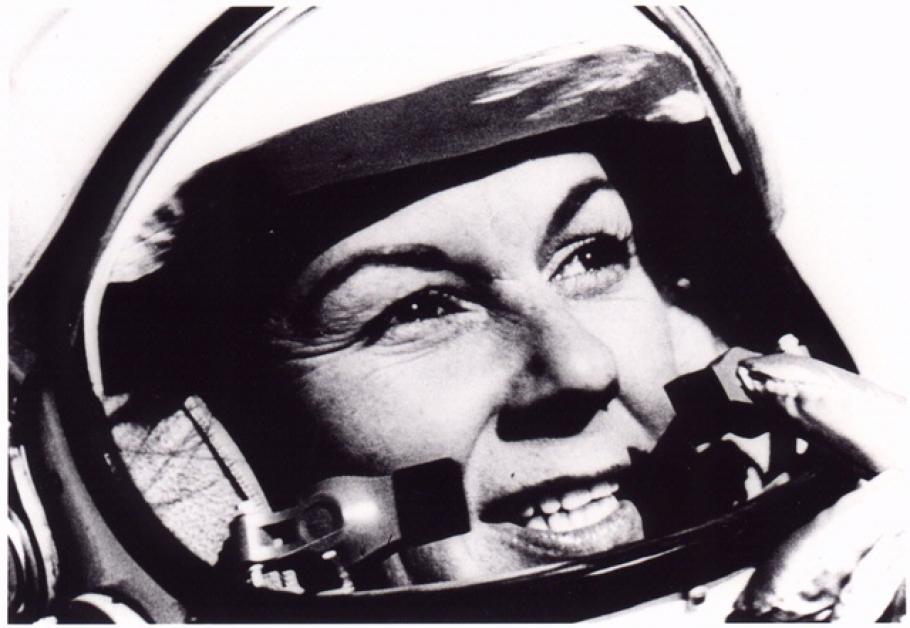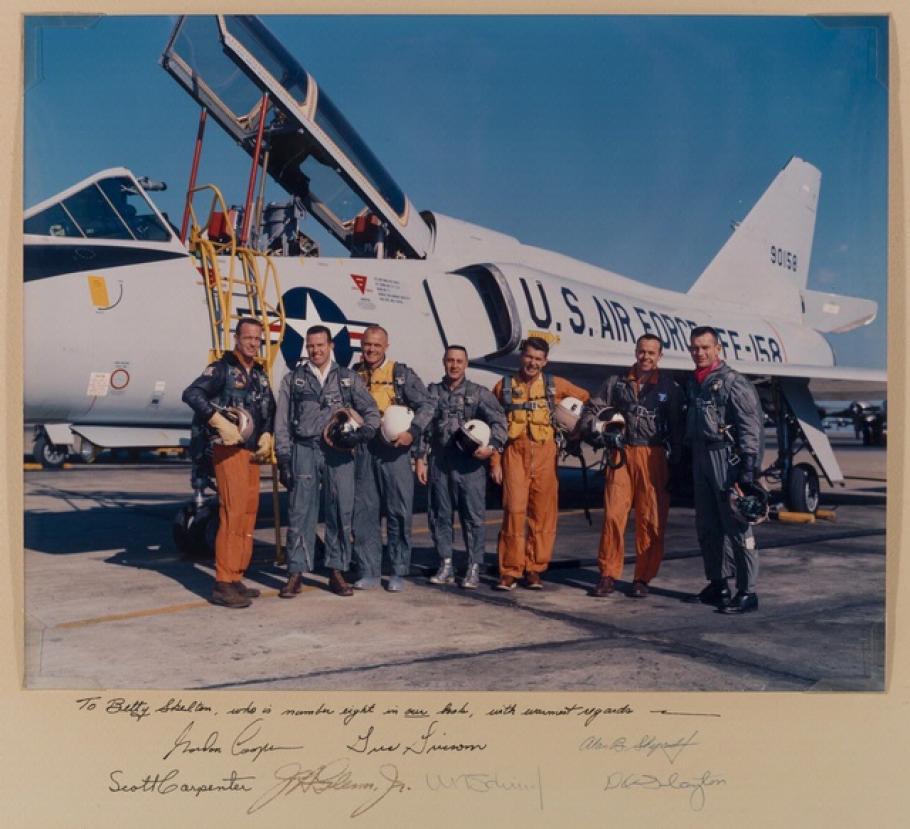In the mid twentieth century, the thought of sending humans into space was only the makings of science fiction. On April 9, 1959, sci-fi and reality merged as NASA introduced the seven American astronauts who would participate in the first human spaceflight program in the United States, Project Mercury. Within four months of the announcement, all seven astronauts—Walter M. "Wally" Schirra Jr., Donald K. "Deke" Slayton, John H. Glenn Jr., M. Scott Carpenter, Alan B. Shepard Jr., Virgil I. "Gus" Grissom, and L. Gordon Cooper, Jr. —and their wives had signed contracts with Life magazine for exclusive access to the astronauts, their families, and their individual roles in the “Space Race” story. The major cover story that ran in Life’s September 14, 1959, issue rocketed these astronauts, quickly nicknamed “the Mercury Seven,” to celebrity status.
Autographed publicity photograph of the "Mercury Seven" - (standing, left to right) Alan B. Shepard, Jr.; Walter M. Schirra, Jr.; John H. Glenn, Jr.; (seated, left to right) Virgil I. Grissom; M. Scott Carpenter; Donald K. Slayton; Leroy G. Cooper, Jr., circa 1959. A model of an Atlas launch vehicle with Mercury capsule sits on a table in the foreground.]
Although Life held exclusive rights to the Mercury Seven’s stories, Look magazine developed a very different approach to covering the “Space Race” saga: What if a woman could be the first American in space? In 1959, Look arranged for Betty Skelton, accomplished aerobatics champion and race car driver, to participate in a series of physical and psychological tests like those given to the Mercury Seven astronauts—a space-age publicity stunt.
As an experienced pilot and adept (but unofficial) team member, Skelton held the respect of the Mercury Seven astronauts who admiringly referred to her as “eight.” (Listen to Skelton’s NASA oral history interview.)
This photo, taken January 20, 1961, shows Scott Carpenter, Gordon Cooper, John Glenn, Gus Grissom, Wally Schirra, Alan Shepard, and Deke Slayton standing in front of a Convair F-106B-75-CO Delta Dart (r/n 59-0158).
Sadly, not participating in an official NASA capacity meant that this training opportunity would only serve to support Look’s February 2, 1960, cover story “Should a Girl Be First in Space?” While Skelton was acutely aware that a woman would not be among the first Americans in space, she nevertheless dutifully participated in this publicity stunt in the hopes of paving the way to a future where women could be anything they choose, including astronauts. Interested in learning more about Skelton’s aviation career? Visitors can make an appointment to view the Betty Skelton Collection in the Archives’ Reading Room.


